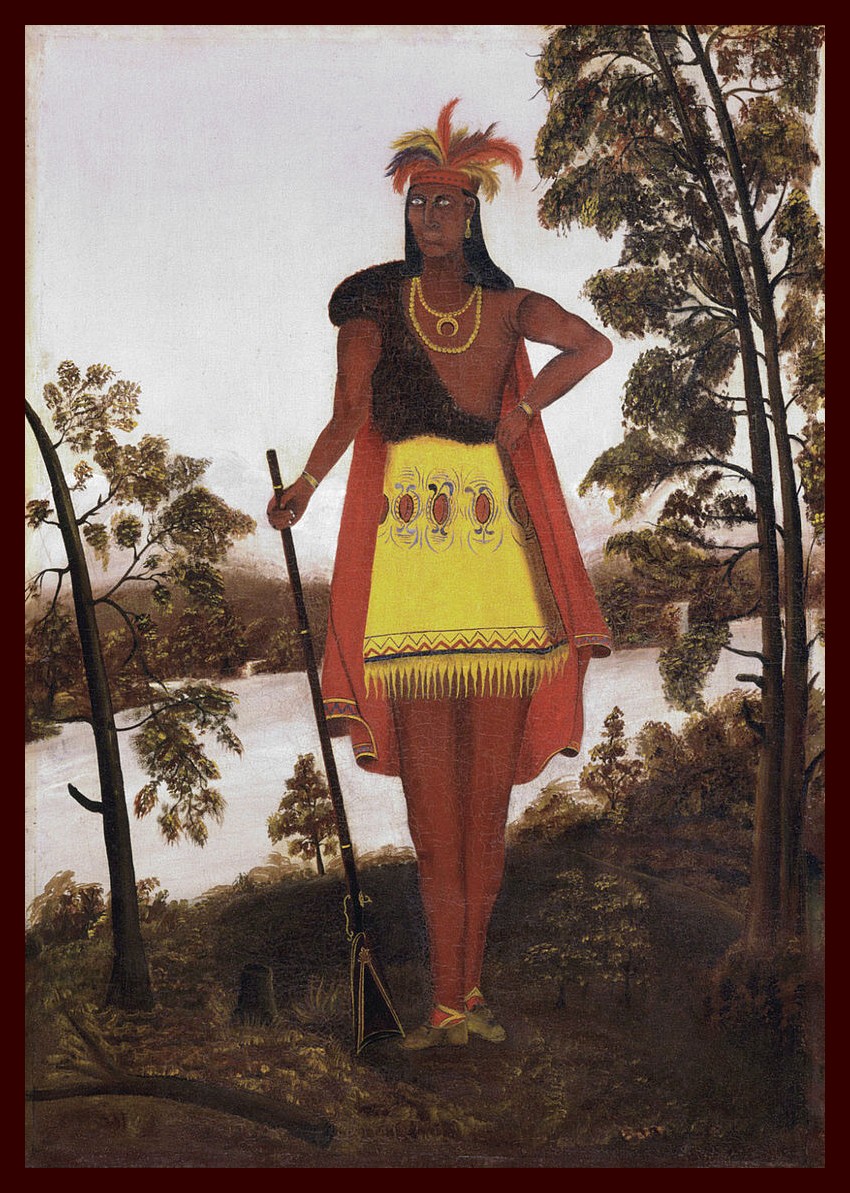Subsection Title (may be changed): The Mediator of the Susquehanna
Located at the forks of the north and west branches of the Susquehanna River, what is today the city of Sunbury was once the Indian town of Shamokin. Shamokin served as the Indian capital of the Province of Pennsylvania, a busy trade hub and facilitator of cultural exchange that echoed with the harmony of countless tongues. Throughout decades of the seventeenth century, this regional harmony was overseen by the great leader Chief Shikellamy.

Shikellamy’s origins are unclear, but it is known he became an Oneida, or a member of the Iroquois Confederacy, through adoption. Some have claimed he was born a Susquehannock and adopted into the Confederacy due to his impressive performance in battle, while others claim he was kidnapped from his homeland of France and then adopted. Shikellamy himself, however, held that he was Cayuga, and there is an account of Conrad Weiser stating the same in one of his speeches. Despite his dubious origins, Shikellamy earned the admiration of the Oneida and left behind a confident legacy. As he grew up, Shikellemay steadily gained the respect of his tribe, eventually being accepted by the Haudenosaunee gantowisas (women acting in their official capacities) as a leader and chief. The denotation of his real name testifies to Shikallemy’s character: Ongwaterohiathe, meaning “The Enlightener,” or “He who causes it to be light.” He was also occasionally called Swataney.
Reverence for Shikellamy withstands the test of time, as Cindy Inkrote of the Northumberland Historical Society recounts, “He would think things through. He was a wise man. He truly was. And Peace was his ultimate goal.” Given the darkness creeping up on the Iroquois settlement as Shikallemy reached adulthood, his “enlightening” reign was surely auspicious.
The Susquehanna River Valley had a rich history of occupation by different Native American Tribes before the Iroquois Confederacy gained control in 1675. Conquering the Susquehannocks who ruled before them, the Iroquois seized control of the land along the Susquehanna River. The Iroquois Confederacy, also known as the Haudenosaunee or Five Nations, was composed of five tribes – Cayuga, Mohawk, Oneida, Onondaga, and Seneca. The Tuscarora tribe joined later on, turning Five into Six Nations. For half a century, the Iroquois Confederacy governed the diverse region without much intervention, allowing different tribes to handle their matters independently.
William Penn’s arrival on the Delaware River in 1683 drove the Delaware and Shawnee tribes up the Susquehanna, and by 1727 most of their tribe members had settled in Shamokin. This period marked turbulent changes throughout the region, most notably the sale of land to settlers by subdivisions of the Iroquois and the growing issue of trafficked liquor. In response, the federal council at Onondaga convened to jumpstart efforts to preserve the valley. The council determined that Shikellamy would be sent to Shamokin to manage the affairs of the region. He was appointed as the sole liaison for regional tribes, the man through whom all decisions related to the valley and the proprietary government were to pass. In 1728, Shikallemy arrived at the forks of the Susquehanna and stepped foot in Shamokin.
Subsection 2 Outline: Shikellamy’s Influence On Colonial Relations
- Interactions with tribes and European settlers
- Stance on Alcohol
- Moravians relations
- Conrad Wieser friendship and work together
- Blacksmith Shop – Include Sid Jamieson quotes/story from the interview
Subsection 3 Outline: Shikellamy’s Legacy Continues
- Shikellamy Death
- Shikellamy’s Profile
- Shikellamy’s beads and medal at the Northumberland Historical Society
- Shikellamy monument in Union County
- Reflection on his role in shaping relations between Native Americans and the Europeans
Comments